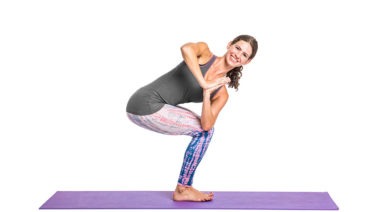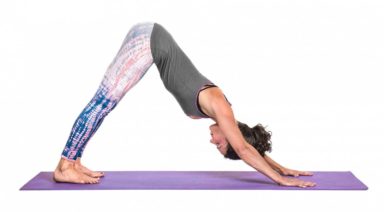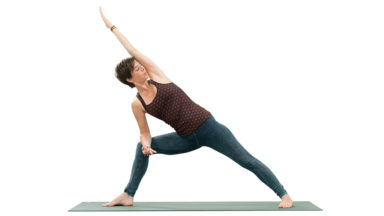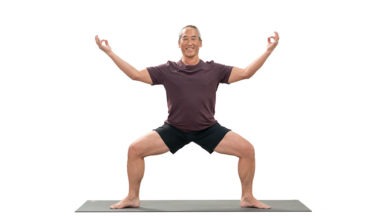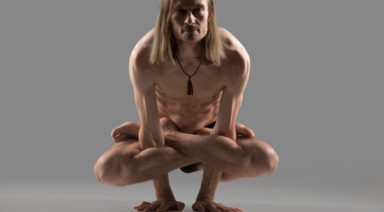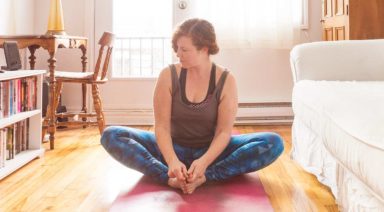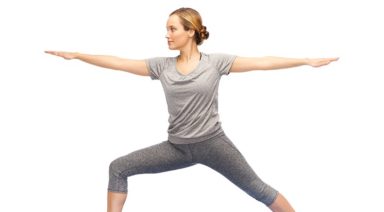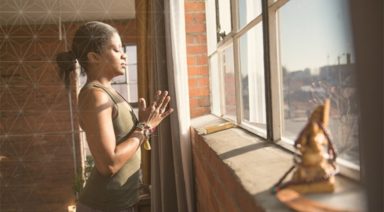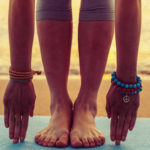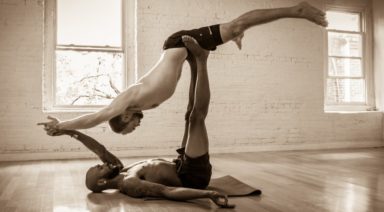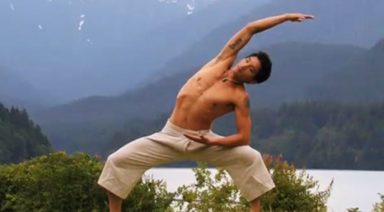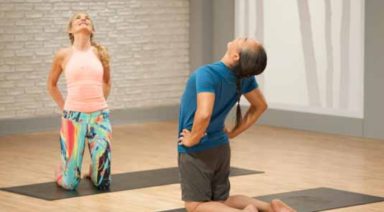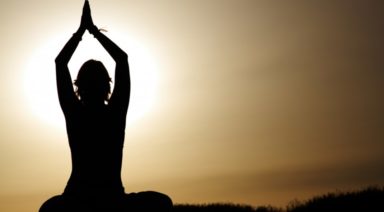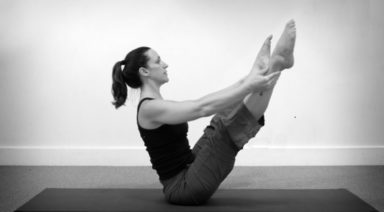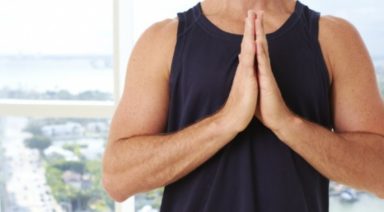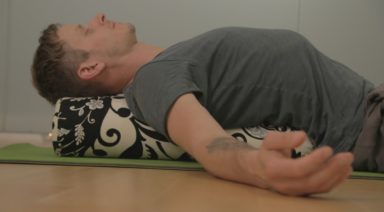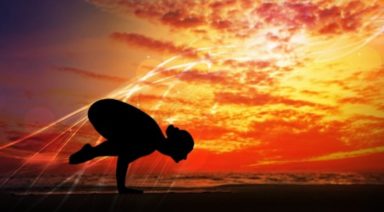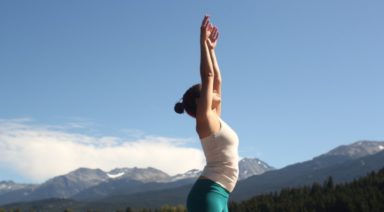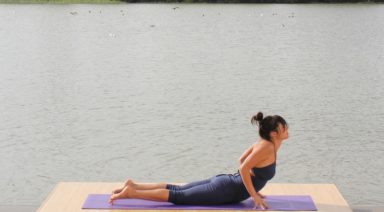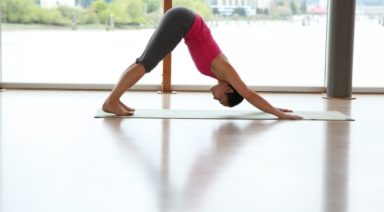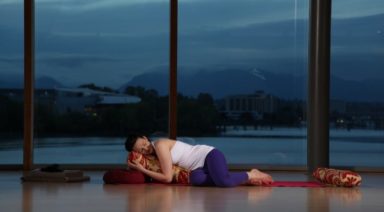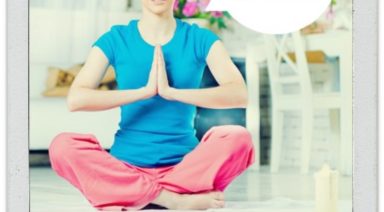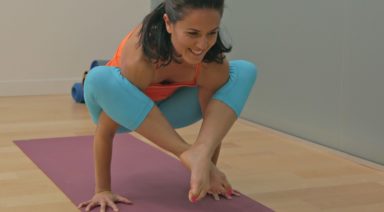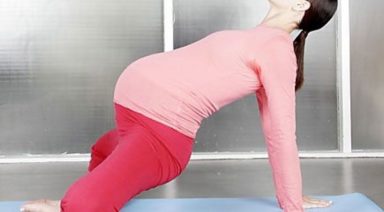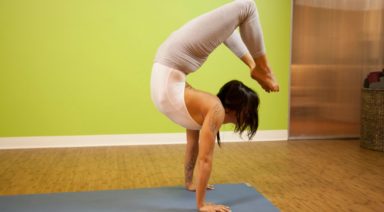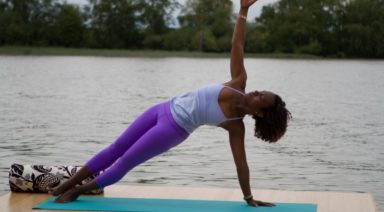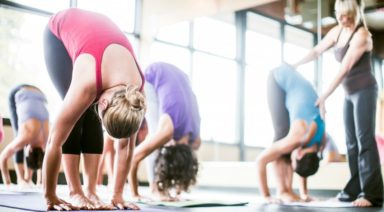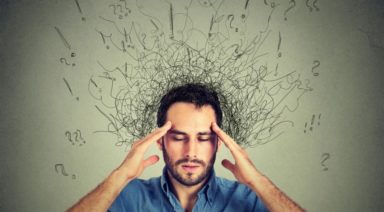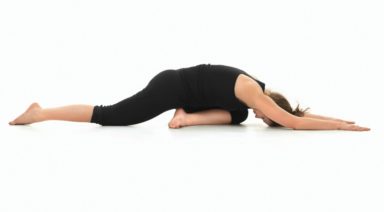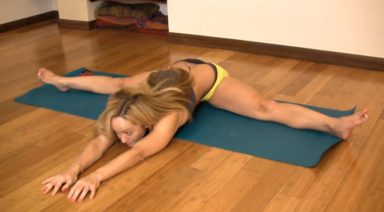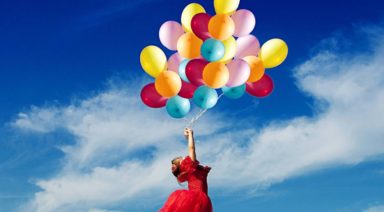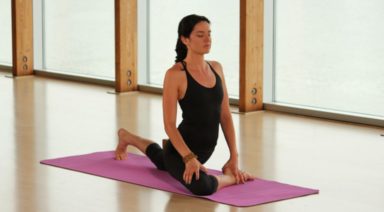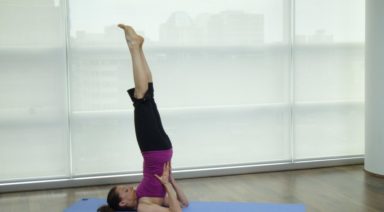Ardha Hanumanasana: Half Front Splits Pose
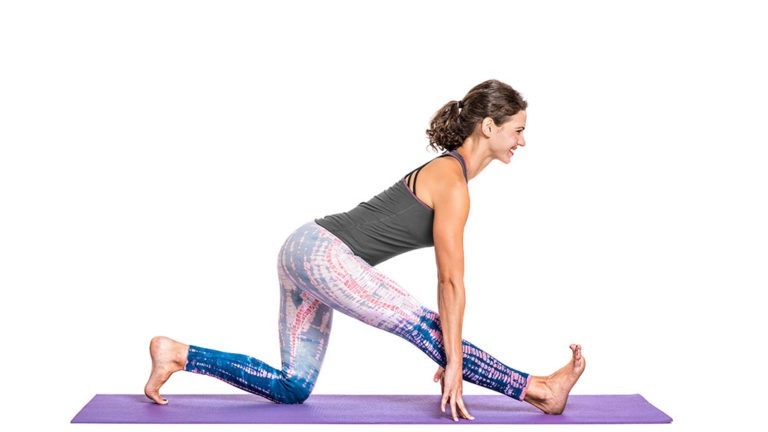
ADJUSTMENTS | BENEFITS | SEQUENCING | SANSKRIT | STEPS
Ardha hanumanasana (are-dah hah-new-mahn-AHS-ah-nah) is a big stretch for hamstrings. This pose is more approachable than full hanumanasana and strengthens the muscles needed to practice front splits safely with the correct muscles properly engaged.
Philosophy + Origin
One of the main characters of the Ramayana is Hanuman, the famous monkey god, devotee of Lord Rama, and son of Vayu (the god of wind). He is celebrated in the pose hanumanasana, which physically represents his famous “leap of faith,” taking him across the ocean from India to Sri Lanka. Ardha hanumanasana, the preparatory pose for hanumanasana, can represent the stability and strength needed to make grand, world-changing (or life-changing) gestures. Rather than only focusing on gaining flexibility, practice ardha hanumanasana to create a healthy balance of flexibility and strength. When practicing ardha hanumanasana, remind yourself of the dangers of only being flexible in life; in order to really get where you want to go, you must also be strong and stable.
ADJUSTMENTS/MODIFICATIONS:
- Use blocks under your hands to help keep the torso upright and the spine long.
- Keep your hands directly under the shoulders.
- As flexibility increases, try walking your hands down the extended leg toward the feet.
STEP-BY-STEP:
- Start in a lunge with your right foot forward and your back knee on the ground. Shift your hips back to stack over your left knee, and straighten your front leg to a place where you feel a stretch, but not strain.
- Flex your right toes toward your face so that the sole of your foot is off the mat. Place your hands directly under your shoulders, either on the floor or on blocks. Keep length in your spine, both front and back.
- Keep your right kneecap pointed directly up, with at least a small bend behind your knee to prevent hyperextension. Engage your quadriceps.
- Press down through your fingertips to keep length in the torso and engage the muscles in your belly.
- To deepen the stretch, begin to walk your hands toward your feet. As you work in the pose, focus on pulling the pinky toe of your right foot back towards your face and pressing forward with the ball of your foot right under the big toe.
- Hold the pose for up to 60 seconds before bending the front knee and returning to a lunge. Repeat on the other side.
PREPARATORY POSES:
- Crescent moon pose | Anjaneyasana
- Head to knee pose | Janu sirsasana
- Seated forward fold | Paschimottanasana
SEQUENTIAL POSES:
- Standing hand to toe pose | Utthita hasta padangusthasana
- Seated forward fold | Paschimottanasana
- Wide-angle seated forward bend | Upavistha konasana
COUNTER POSES:
- Bridge pose | Setu bandhasana
- Happy baby | Ananda balasana
SANSKRIT:
- Ardha = Half
- Hanuman = The monkey god
- Asana = Pose
PHYSICAL BENEFITS:
- Stretches hamstrings
- Preparation for hanumanasana
- Can increase awareness and stability through the pelvis
ENERGETIC BENEFITS:
- Thought to encourage patience and devotion
Legal Disclaimer Before participating in any exercise program or using any fitness products or services that may be described and/or made accessible in or through the Gaia Website and/or the Services, you should consult with a physician or other healthcare provider. Read more about Gaia’s Terms Of Use.
Parivrtta Utkatasana: Revolved Chair Pose

ADJUSTMENTS | BENEFITS | SEQUENCING | SANSKRIT | STEPS
Parivrtta utkatasana (par-ee-vrit-tah OOT-kah-TAHS-anna) lives up to the Sanskrit translation of power and ferocity. A great way to strengthen and lengthen the leg muscles, this challenging posture also lengthens and improves mobility in the spine. Practicing parivrtta utkatasana will give a feeling of groundedness in the lower half of the body and open spaciousness in the upper body.
Philosophy + Origin
Parivrtta utkatasana is an opportunity to practice the concept of “rooting to rise.” In order to deepen the posture, you must find strength in the legs and lightness in the spine and upper body. While it’s easy to only focus on deepening the twist, the best results come from first setting up your foundation. This philosophy of building a strong foundation through rooting and grounding is helpful in life. While your goals and aspirations, even your daily to-dos, can constantly demand your attention, get strong through your roots before you try to spread your wings.



